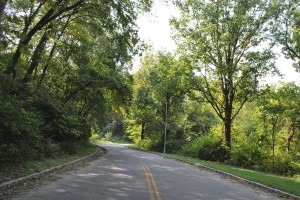By LESLIE COLLINS
Northeast News
April 22, 2013

Despite safety enhancements, some of Kansas City’s parks continue to generate a high volume of calls for service.
“You’ve done everything you can and yet there’s still a problem,” City Council member Scott Wagner said of three Historic Northeast parks.
For Budd Park, George E. Kessler Park and Independence Plaza Park, Wagner feels the only option left to enhance safety is to close the parks during evening hours, an unprecedented option in Kansas City. Currently, all of the city’s parks are open 24 hours a day.
During the past year, a parks safety task force comprised of police officers, parks and recreation department staff, neighborhood leaders and Wagner evaluated 10 of the city’s parks that received the most calls for service. Two of the parks were soon ruled out since most of the calls dealt with traffic tickets. The remaining eight included the three Historic Northeast Parks, Tower Park, Minor Park, Martin Luther King Jr. Square and Swope Park.
The task force noted issues specific to each park and made recommendations geared toward each park during a February Board of Parks and Recreation Commissioners meeting.
“Certainly one size does not fit all,” Wagner said. “The idea is really trying to see if you can make a difference in some of these higher call volume parks, so you can identify some strategies that might make a difference in your overall approach.”
Recommendations for the parks ranged from improving lighting and sight lines to installing barriers to prevent vehicles from hopping curbs to adding security cameras to trimming native grasses, among other suggestions. The three Historic Northeast parks were the only ones with the recommendation of limiting park hours.
Historic Northeast parks face a variety of issues, Wagner said.
“We have everything from things that are parking and traffic related to noise to suspicious characters to prostitution to stolen autos and everything in between,” Wagner said.
In January, two homicide victims were discovered inside a vehicle near Budd Park at the intersection of Denver and St. John Avenue. In December, a confrontation between two groups of teens near Budd Park resulted in two teens being shot, with one suffering from critical wounds.
In a survey listed in the Truman Area Plaza Plan, 45 percent of area residents said they don’t feel safe at parks during evening hours, Wagner said.
“To me that’s very telling,” Wagner said. “It tells me whether or not they use the park at night. They don’t want to be around it because they believe there is unsafe activity. To me, that should say that maybe you have to do something a little bit outside of the norm.”
In the case of the gated Independence Plaza Park, the parks department added additional lighting and surveillance cameras. A sign clearly states that the park is closed from dusk until dawn. However, the posting is unenforceable since there’s no city ordinance to support limiting park hours, Wagner said.
“That’s one example where a closure policy made perfect sense because you have a sign here with nothing behind it. That’s crazy,” he said.
Park improvements over the years at Budd Park have included trimming back trees to eliminate hideout spots, installing additional lighting and installing “no parking” signs that limit parking hours. Loitering as well as graffiti continue to remain a problem, he said.
Illegal dumping and a transient population continue to plague Kessler Park, which Wagner hopes could be somewhat alleviated if the park was closed during evening hours.
Limiting park hours would require the city council to approve an ordinance and the parks board doesn’t seem keen on the idea, Wagner said.
“It is my understanding that at this point they still do not look favorably upon a policy like that which is unfortunate,” Wagner said.
Wagner added he’s giving the parks board time to consider the suggestions before creating a city ordinance.
Improving safety in parks can have a trickle down effect into the neighborhood, Wagner said. In addition, when a park feels safe, more people will use the park for positive activities, he said.
“The more the park is used in a good way, the more people will come to it and the more you’ll push aside some of the negative uses with it,” he said. “If people feel unsafe, they won’t use it and therefore those negative things will continue to happen.”














